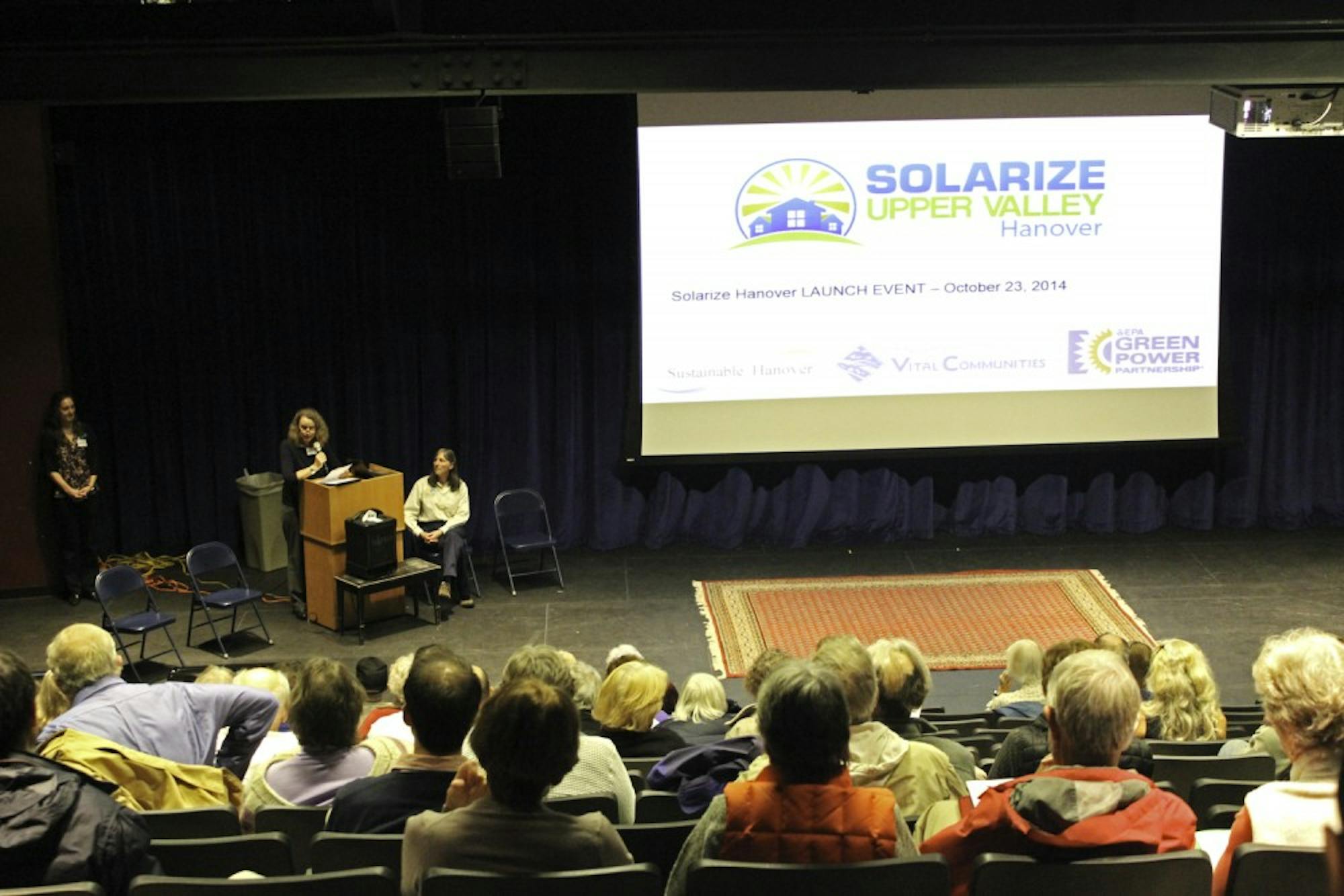Town officials say they hope to see solar panel arrays become a more regular feature in Hanover. Roughly 200 people attended an informational meeting at Hanover High School on Thursday to discuss the Solarize Upper Valley initiative, which aims to capitalize on government financial incentives and collective buying power to equip as many as 300 Upper Valley homes with solar power in the next year.
David McManus, chair of the town’s sustainability committee, said Hanover’s target is 100 solar installations. Hanover public works director Peter Kulbacki said he hopes to see as many as 130. Solarize Hanover, a collaboration between the town government’s sustainability committee, non-profit Vital Communities and town residents, is a sub-project under Solarize Upper Valley.
Lyme, which participated in an earlier phase of the initiative, installed 51 solar arrays in households in 2014.
“We’re expecting at least that we can meet what the town of Lyme has done and better that,” McManus said. “We have many more people, more households, so we’ll just have to see.”
Sarah Simonds, an energy program manager for Vital Communities, a nonprofit sustainability group, said many people do not consider purchasing solar arrays due to time constraints and confusion about the installation process.
Solarize Upper Valley, based in White River Junction, helped 120 homes install solar arrays in round one of its project.
Simonds said that she hopes to have 300 Upper Valley households solarized in round two, and, in a possible third round, to boost the overall number to over 500. The third phase does not have a start date at this time.
Bulk buying, state rebates and federal tax credits lower prices of solar arrays, McManus said.
“It’s less expensive to have solar in Hanover than it may ever be in the future between the state rebates and the federal tax credit,” said town manager Julia Griffin.
If 10 households sign up for solar power, the base cost for each would be $19,000. A New Hampshire rebate would return $3,750 to each homeowner, and they would then receive a federal tax credit for $4,575, bringing the actual cost down to $10,675 per household.
If 80 households contributed, however, the base cost would be $18,000, the state rebate would hold level at $3,750, and the federal tax credit would decrease to $4,275, leaving each homeowner to pay $9,975.
Energy Emporium, a green energy contractor based in Enfield, will conduct free site visits to evaluate different households and make recommendations for installation, Founder Kim Quirk ’82 Th’83 said. Griffin said that between 25 and 30 percent of households participate in a site-evaluation will install solar systems. If a homeowner agrees to install solar, he or she would sign a contract and make a $2,100 down payment on the program, which would allow Energy Emporium to begin the permitting and purchasing process.
Further payments would be due shortly before the one week installation period begins in the spring, Quirk said.
McManus said that those purchasing solar arrays could expect to fully recoup their initial investment within eight to 10 years of installation under the Solarize Hanover plan, and, if enough people sign on, the recoupment could be possibly as low as four years. An average monthly energy bill would cost around $90 a month, Quirk said. A standard solar array produces roughly 600 kilowatt hours, the average household monthly use, Quirk said.
Initial registration is open until Jan. 31, 2015.
Barbara Munson, a Hanover resident who attended the meeting, said she was interested by the prospect of solar energy and would like to sign up for an initial site visit.
“I’m certainly interested, but I’ll have to see all the individual figures and I’ll have to convince my husband, who is not as interested,” Munson said.
Hanover was recently named a “Green Power Community” by the Environmental Protection Agency, one of 54 in the country and the first in northern New England, Griffin said.
“We see the growth of Hanover’s green power community as one of the most effective ways to address climate change at the local level,” McManus said. “We’re practical idealists.”
Griffin and McManus said that they hope to make 100 percent of Hanover’s electricity renewable in the long term. Hanover receives roughly 17 percent of its energy from renewable resources, Griffin said, but the town hopes to improve that figure over the coming years.




